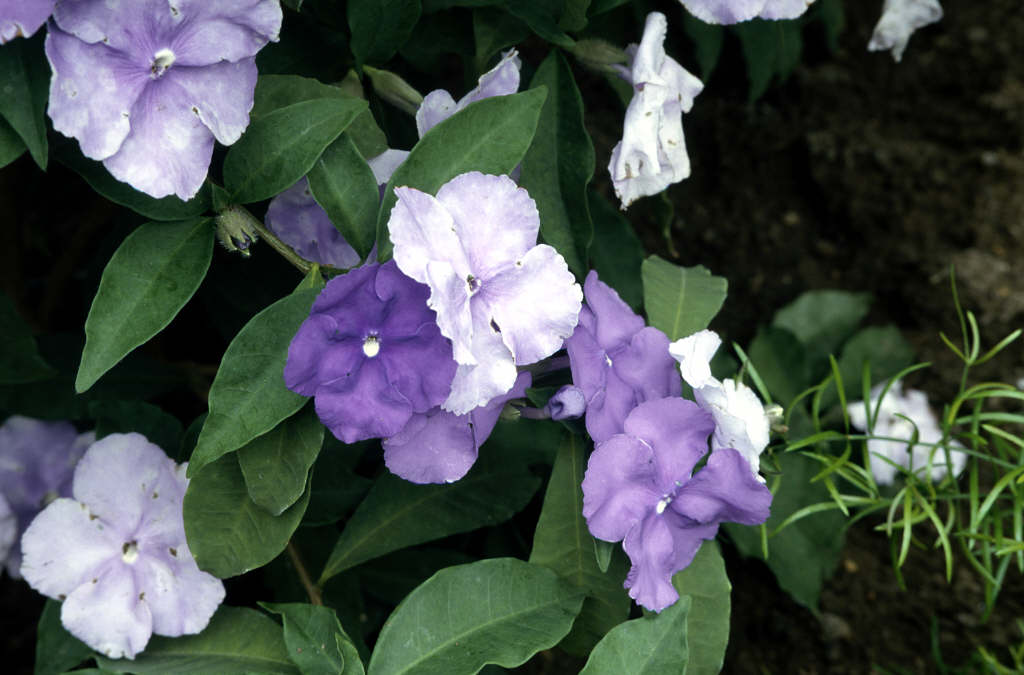Not the plant you're looking for? Search over 300,000 plants
Conservatory GreenhouseHouseplantsShrubs
Size
Ultimate height
1.5–2.5 metresTime to ultimate height
10–20 yearsUltimate spread
1–1.5 metresGrowing conditions
Chalk
Clay
Loam
Sand
Moisture
Moist but well–drainedpH
Acid, Alkaline, NeutralColour & scent
| Stem | Flower | Foliage | Fruit | |
| Spring | Purple White | Green | ||
|---|---|---|---|---|
| Summer | Purple White | Green | ||
| Autumn | Green | |||
| Winter | Green |
Position
- Full sun
Aspect
South–facing or West–facing
Exposure
Sheltered Hardiness
H1CBotanical details
- Family
- Solanaceae
- Native to GB / Ireland
- No
- Foliage
- Evergreen
- Habit
- Bushy
- Potentially harmful
- Harmful if eaten. Wear gloves and other protective equipment when handling TOXIC to pets (dogs) - see the HTA guide to potentially harmful plants for further information and useful contact numbers
- Genus
Brunfelsia are evergreen shrubs or small trees, with simple leaves and showy, salver-shaped flowers, sometimes fragrant
- Name status
Correct
- Plant range
- Brazil
How to grow
Cultivation
Grow outdoors in full sun in frost-free area in humus-rich, moist but well-drained soil. Grow under glass in peat-free, loam-based compost in bright indirect or filtered light. Pinch out tips to keep compact
Propagation
Propagate by softwood cuttings
Suggested planting locations and garden types
- Patio and container plants
Pruning
No pruning required
Pests
May be susceptible to glasshouse red spider mite, glasshouse whitefly, thrips and mealybugs under glass
Diseases
Generally disease-free
Get involved
The Royal Horticultural Society is the UK’s leading gardening charity. We aim to enrich everyone’s life through plants, and make the UK a greener and more beautiful place.
